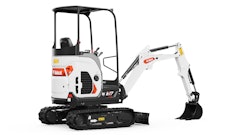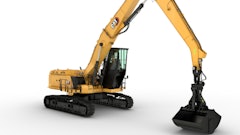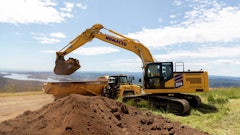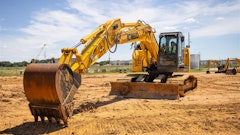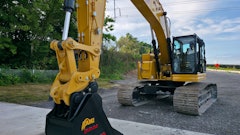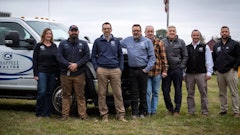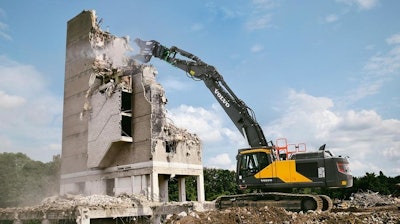
Volvo Construction Equipment (Volvo CE) showcased the latest addition to its purpose-built demolition tool lineup in a virtual event held earlier this week. The new 38-ton EC380E Straight Boom excavator incorporates a 23-ft. straight boom and purpose-built arm that deliver a significant height and reach advantage over the traditional boom-and-stick configuration, and make it well suited for demolition applications.
 Volvo Construction Equipment
Volvo Construction Equipment
Safety and Durability Built In
The 308-gross-hp excavator has an operating weight from 83,335 to 94,799 lbs. and is capable of a standard breakout force of 44,512 lbf.
To maximize safety during tough demolition jobs, the cab is protected against falling debris with a frame-mounted Falling Objects Guard. Large windows with a wiper and washer ensure optimal visibility of the worksite. The roof window and front one-piece glass are made from P5A, which is resistant to high impacts. Nighttime visibility is aided by standard LED lights on both the boom and platform, with additional lighting for the cabin and counterweight available as options.
For enhanced durability, the heavily reinforced main frame is made of heavy-duty plate steel with bolt-head protection. It also features heavy-duty (or eXtreme Duty) undercover protection, a durable belly guard and a full track guard. A slew ring cover and heavy-duty side doors with screens and louvres offer added protection.
The bolt-on Side Impact Protection system protects the superstructure from damage. The machine is further guarded against damage from debris by additional protection on the bucket and boom cylinders. A reversible cooling fan ejects any debris stuck in the radiator.
“When our customers ask for additional reach without sacrificing stability or performance, we work hard to make it happen,” said den Hoed. “The EC380E Straight Boom is a great example. Added reach while protecting operators means demolition contractors can now take on even more challenging jobs with total confidence.”
Removable Counterweight
Adding to that confidence when working with heavy tools at higher heights is a 22,046-lb. counterweight that adds both lift capacity and stability.
 Volvo Construction Equipment
Volvo Construction Equipment
“The benefit of this is you remove 20,000 lbs. from the operating weight of the machine. This gets you down below 80,000 lbs. for transport,” den Hoed commented. “Now, when you get to the jobsite, you connect it back up, pin it on, activate your hydraulics to lift it, bolt it back on and you're ready to go to work.”
Dealing with Dust
The EC380E Straight Boom comes with several standard features that are useful in demolition applications, including X1 and X3 auxiliary piping, a quick-fit and oil drain line and water lines connected to a dust suppression system. A high-pressure water gun is mounted behind the cab for cleaning the machine.
The dust suppression system features a 7.9-gpm lifting pump that feeds water to either two or four arm-based nozzles that together create a fine mist to contain dust. “Similar to our high-reach machines, which offer continuous dust suppression off of the end of the arm, two nozzles or four nozzles, we offer the same thing on this machine,” den Hoed pointed out.
 Volvo Construction Equipment
Volvo Construction Equipment
Take a hammer, for example. “As soon as you're making the impacts, dust billows out and you want to suppress that dust. So, it immediately provides dust suppression,” den Hoed noted. “However, if you have a different type of tool, say, a processor or shear with jaws that open and close, you want to have visibility to your work while you're closing the tools.”
To accommodate this, the system can be set with a two-second delay function. “When you activate your hydraulics, you have a couple seconds to watch and make sure that your tool is placed properly… before you have your dust suppression,” den Hoed explained.
“So, regardless what your needs are – whether you want continuous flow, whether you want automatic flow and control by your attachment – we have the dust suppression for you,” he added.



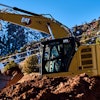
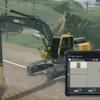
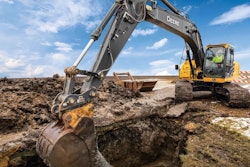
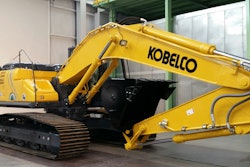
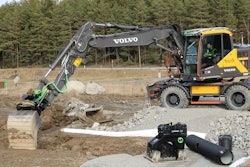



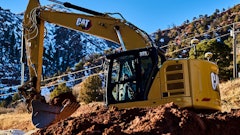
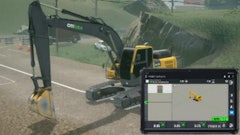
![Hcm Ax Landcros Dual Branded Logo[25]](https://img.forconstructionpros.com/mindful/acbm/workspaces/default/uploads/2025/11/hcmaxlandcros-dual-branded-logo25.Qhg3vUCjoK.jpg?ar=16%3A9&auto=format%2Ccompress&bg=fff&fill-color=fff&fit=fill&h=135&q=70&w=240)
